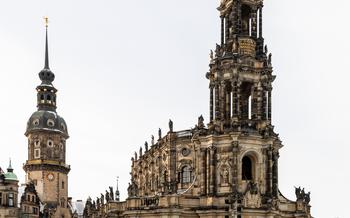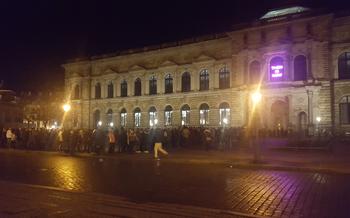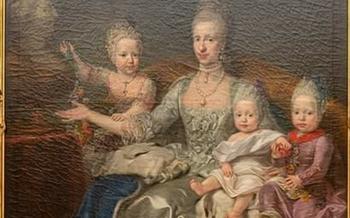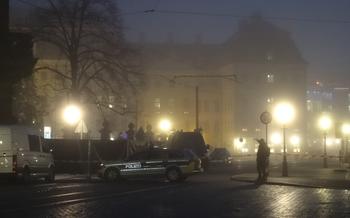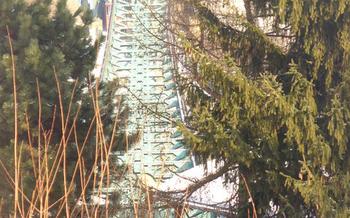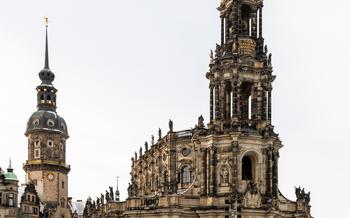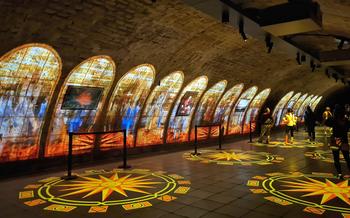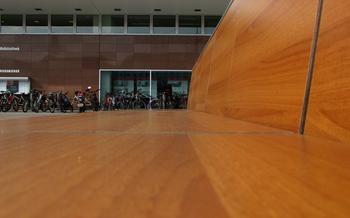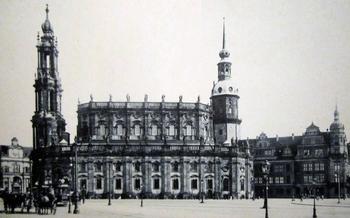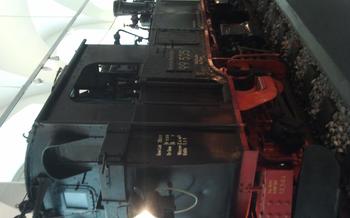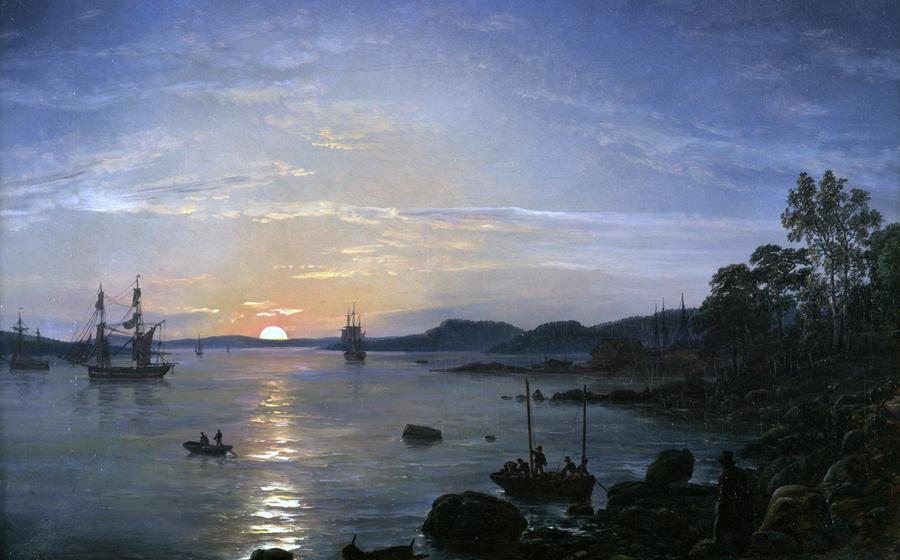
State Museum of Prehistory
- Historical Significance
- Collections and Exhibits: A Journey Through Prehistory
- Stone Age Tools and Weapons
- Ceramics and Pottery:
- Bronze Age Artifacts
- Iron Age Exhibits: Technological Advancements and Cultural Transformations
- Jewelry and Adornments
- Human Remains and Burials
- Interactive Exhibits and Activities
- Educational Programs and Workshops
- Temporary Exhibitions and Special Events:
- Museum Shop and Souvenirs
- Accessibility and Facilities
- Insider Tip:
Historical Significance
The State Museum of Prehistory in Dresden, Germany, stands as a testament to the rich archaeological heritage of the region. Founded in 1874, the museum has played a crucial role in preserving and showcasing prehistoric artifacts from Saxony and beyond. Dresden's significance as a center for archaeological research dates back to the 19th century when scholars began to uncover the region's prehistoric past. The museum's extensive collection, including renowned discoveries such as the Venus of Hohle Fels, has contributed to our understanding of human evolution and cultural development during the Stone Age. Through its exhibitions and educational programs, the museum continues to promote public awareness of prehistory, inspiring curiosity and fostering a deeper appreciation for our shared human origins.
Collections and Exhibits: A Journey Through Prehistory
The State Museum of Prehistory in Dresden boasts a diverse and captivating array of prehistoric artifacts, offering visitors a comprehensive journey through the various epochs of human history. The museum's permanent exhibits are meticulously organized, each section dedicated to a specific period or theme.
Upon entering the museum, visitors are greeted by a remarkable collection of stone tools, weapons, and tools, providing a glimpse into the technological advancements of early humans. The exhibits showcase the evolution of stoneworking techniques from the Paleolithic to the Neolithic periods, demonstrating how these tools played a crucial role in hunting, gathering, and everyday life.
Proceeding further, visitors encounter an impressive array of prehistoric ceramics and pottery. These intricate vessels, adorned with various decorative motifs, offer insights into the artistic expressions and craftsmanship of ancient societies. The exhibits explore the diverse functions of pottery, from storage and cooking to ritual use, highlighting the cultural significance of these objects.
The museum's collection also features a remarkable assortment of Bronze Age artifacts, including tools, weapons, and ornaments. These objects showcase the mastery of bronze metallurgy, a technological breakthrough that transformed prehistoric societies. Visitors can admire the intricate craftsmanship of bronze weapons, such as swords and spearheads, as well as the delicate beauty of bronze ornaments, such as jewelry and figurines.
Stone Age Tools and Weapons
The State Museum of Prehistory in Dresden boasts an impressive collection of Stone Age tools and weapons, providing a glimpse into the technological advancements of our earliest ancestors. These artifacts, crafted from various types of stone, offer insights into the daily lives, hunting practices, and survival strategies of prehistoric humans.
The museum's collection includes hand axes, scrapers, and arrowheads from the Paleolithic era, showcasing the development of stone tool technology over time. These tools, often made from flint or other hard stones, were essential for hunting, gathering, and processing food. Visitors can marvel at the intricate craftsmanship and ingenuity of these early tools, which played a crucial role in the survival of our species.
Among the highlights of the collection is a rare collection of finely crafted Neolithic stone tools, including polished axes, chisels, and adzes. These tools, with their smooth surfaces and symmetrical shapes, demonstrate the increasing sophistication of stoneworking techniques during the Neolithic period. They were used for various purposes, including woodworking, agriculture, and construction, and their discovery provides valuable insights into the development of early farming communities.
Through these Stone Age artifacts, the State Museum of Prehistory offers a tangible connection to the lives of our prehistoric ancestors, showcasing the remarkable ingenuity and resourcefulness of early humans as they adapted to their environment and laid the foundation for future technological advancements.
Ceramics and Pottery:
The State Museum of Prehistory in Dresden boasts an impressive collection of prehistoric ceramics and pottery, offering visitors a glimpse into the diverse artistic and practical expressions of ancient civilizations. These ceramic artifacts, crafted from clay and fired at high temperatures, showcase the remarkable skills and ingenuity of our ancestors.
The museum's collection spans a wide range of periods and cultures, from the Neolithic to the Iron Age. Visitors can admire a variety of ceramic vessels, including pots, bowls, jars, and figurines. Each piece displays unique characteristics, reflecting the diverse functions and styles that existed across prehistoric societies.
The museum's exhibits provide insights into the techniques and materials used by prehistoric potters. Visitors can learn about the different types of clay used, the methods of shaping and firing, and the decorative techniques employed, such as painting, engraving, and stamping.
Among the highlights of the collection is a beautifully preserved Neolithic pot decorated with intricate geometric patterns. Another remarkable piece is a Bronze Age urn adorned with stylized animal figures, demonstrating the artistic and symbolic significance of ceramics in prehistoric societies.
These ceramic artifacts offer a tangible connection to the lives of our prehistoric ancestors. They reveal their daily routines, their technological advancements, and their artistic expressions. Through these pottery remains, the State Museum of Prehistory brings the distant past to life, allowing visitors to appreciate the rich cultural heritage of humankind.
Bronze Age Artifacts
The State Museum of Prehistory in Dresden houses an impressive collection of Bronze Age artifacts, offering a glimpse into the technological advancements and cultural practices of this transformative period. Among the highlights is a remarkable collection of bronze tools, showcasing the mastery of metalworking achieved by prehistoric artisans. These tools include axes, chisels, hammers, and sickles, each meticulously crafted for specific purposes. The museum also displays a range of bronze weapons, such as swords, spears, and shields, providing insights into the warfare and defense strategies of Bronze Age societies.
Equally captivating are the bronze ornaments on display, reflecting the growing sense of personal adornment and social status during this era. Necklaces, bracelets, and earrings adorned with intricate patterns and designs showcase the artistic prowess of Bronze Age craftsmen. These ornaments not only served as decorative accessories but also held cultural and symbolic significance, representing wealth, power, and social rank.
One of the most notable pieces in the museum's Bronze Age collection is a beautifully preserved bronze statuette depicting a warrior. Standing tall with a determined expression, the statuette offers a glimpse into the martial traditions and heroic ideals of Bronze Age societies. Its intricate details and lifelike features make it a true masterpiece of ancient craftsmanship.
These Bronze Age artifacts, along with other fascinating exhibits, provide a comprehensive overview of this pivotal period in human history. They invite visitors to explore the technological innovations, cultural practices, and artistic achievements that shaped the development of Bronze Age societies.
Iron Age Exhibits: Technological Advancements and Cultural Transformations
The State Museum of Prehistory in Dresden boasts an impressive collection of Iron Age artifacts that shed light on a period of significant technological advancements and cultural transformations. The Iron Age, spanning from approximately 800 BC to the Roman period, witnessed the widespread adoption of iron metallurgy, which revolutionized various aspects of prehistoric life.
Among the notable Iron Age artifacts on display are tools, weapons, and jewelry. Iron tools, such as axes, hoes, and sickles, enabled more efficient agriculture and land clearance, leading to increased food production and population growth. Iron weapons, including swords, spears, and shields, transformed warfare, providing greater protection and offensive capabilities.
The museum's collection also includes a variety of Iron Age jewelry, showcasing the artistry and craftsmanship of this period. Bracelets, necklaces, and pendants made from iron and other materials adorned the bodies of both men and women, serving as symbols of status, wealth, and personal identity.
The impact of iron metallurgy extended beyond technological advancements. It also influenced cultural and social developments. The control of iron production and trade led to the emergence of powerful elites and the development of complex social hierarchies. Iron weapons played a crucial role in warfare and territorial expansion, shaping political landscapes and cultural interactions.
The State Museum of Prehistory's Iron Age exhibits offer a fascinating glimpse into this transformative period, highlighting the ingenuity, adaptability, and cultural achievements of prehistoric societies as they embraced new technologies and navigated a changing world.
Jewelry and Adornments
The State Museum of Prehistory in Dresden boasts an impressive collection of prehistoric jewelry, offering a glimpse into the aesthetic sensibilities and cultural practices of ancient societies. From delicate beads and pendants to intricate bracelets and necklaces, these adornments showcase the remarkable craftsmanship and artistic expression of our ancestors.
Jewelry played a significant role in prehistoric societies, serving both practical and symbolic purposes. Beads, made from materials such as stone, bone, and amber, were often strung together to create necklaces and bracelets. Pendants, featuring animal motifs or geometric designs, were suspended from necklaces or worn as amulets for protection or good luck.
One of the highlights of the museum's collection is a beautifully preserved gold necklace dating back to the Bronze Age. Comprising a series of intricately linked rings, this necklace is a testament to the advanced metalworking skills of prehistoric artisans. Another notable piece is a silver bracelet adorned with intricate engravings, showcasing the artistic flair of ancient silversmiths.
Beyond their aesthetic appeal, prehistoric jewelry also holds cultural and historical significance. The materials used in their creation, such as precious metals and gemstones, often indicated the wearer's status or wealth. Additionally, the motifs and symbols depicted on jewelry often carried religious or symbolic meanings, providing insights into the beliefs and practices of prehistoric societies.
Human Remains and Burials
The State Museum of Prehistory in Dresden houses a significant collection of prehistoric human remains and burial artifacts, offering a unique glimpse into the mortuary practices and beliefs of our ancestors. The museum's collection includes well-preserved skeletons, skulls, and grave goods, providing valuable insights into the lives and deaths of prehistoric people.
These remains and artifacts allow researchers to study the physical characteristics, health, and dietary habits of prehistoric populations. They also shed light on burial customs, social structures, and religious beliefs. The museum's collection includes evidence of both individual and communal burials, as well as a variety of grave goods, such as jewelry, tools, and pottery, which were buried with the deceased to accompany them into the afterlife.
The display of human remains in a museum context raises important ethical considerations. The museum has taken great care to treat these remains with respect and dignity, ensuring that they are handled and displayed in a sensitive and appropriate manner. Visitors are encouraged to reflect on the lives and stories behind these remains and to consider the cultural and historical significance of these artifacts.
Interactive Exhibits and Activities
The State Museum of Prehistory in Dresden offers a range of interactive exhibits and activities that enhance the visitor experience and make learning about prehistory fun and engaging for people of all ages. One of the highlights is the "Stone Age Village," a replica of a prehistoric settlement where visitors can try their hand at various activities, such as grinding grain, making pottery, or flintknapping. The museum also features interactive displays that allow visitors to explore the evolution of human technology, from the earliest stone tools to the development of metallurgy.
For children, the museum offers a variety of educational games and activities that make learning about prehistory interactive and enjoyable. These include puzzles, quizzes, and hands-on activities that allow children to engage with the museum's collection in a fun and meaningful way. The museum also hosts regular workshops and events for children and families, providing opportunities for hands-on learning and creative expression.
Educational Programs and Workshops
The State Museum of Prehistory in Dresden offers a diverse range of educational programs and workshops designed to engage visitors of all ages and backgrounds. These programs and workshops are part of the museum's commitment to public education and outreach, aiming to promote a deeper understanding of prehistory and its significance.
The museum offers guided tours for groups of all sizes, led by knowledgeable and experienced museum educators. These tours provide a structured and informative exploration of the museum's collection, allowing visitors to learn about the history, significance, and stories behind the artifacts on display.
In addition to guided tours, the museum also offers a variety of workshops and hands-on activities for children and adults. These workshops cover a wide range of topics, from prehistoric art and tool-making to archaeology and excavation techniques. Participants can learn about the daily lives of prehistoric people, explore the museum's collection in greater depth, and engage in creative and educational activities.
The museum's educational programs and workshops are designed to be interactive, engaging, and informative. They provide a unique opportunity for visitors to learn about prehistory in a fun and hands-on way, fostering a deeper appreciation for the past and inspiring future generations of explorers and researchers.
For more information on the museum's educational programs and workshops, please visit the museum's website or inquire at the museum's information desk.
Temporary Exhibitions and Special Events:
The State Museum of Prehistory in Dresden is known for its dynamic and engaging temporary exhibitions and special events that complement its permanent collection. These exhibitions offer visitors an opportunity to explore a wide range of topics related to prehistory and archaeology, delving deeper into specific themes or showcasing new discoveries.
Temporary exhibitions often focus on particular regions, cultures, or periods of prehistory, presenting artifacts and insights from around the world. Past exhibitions have explored topics such as the Neanderthals, the Stone Age in Saxony, and the Bronze Age in the Near East. These exhibitions provide visitors with a chance to learn about different aspects of prehistory and to see rare and unique artifacts up close.
Special events at the museum include lectures, workshops, and guided tours that offer visitors a more in-depth exploration of prehistory. These events are often led by experts in the field of archaeology and provide an opportunity for visitors to engage with researchers and learn about the latest discoveries and research methods.
By offering a variety of temporary exhibitions and special events, the State Museum of Prehistory in Dresden strives to keep its collection fresh and engaging, ensuring that there is always something new to discover for visitors of all ages.
Museum Shop and Souvenirs
The State Museum of Prehistory offers a well-curated museum shop where visitors can purchase a variety of souvenirs and merchandise to commemorate their visit. The shop is located near the museum's exit and features a wide selection of items, including books, postcards, replicas of prehistoric artifacts, and unique souvenirs inspired by the museum's collection.
By purchasing items from the museum shop, visitors not only support the museum's mission of public education and research but also contribute to the preservation and conservation of its invaluable artifacts. The shop's proceeds directly support the museum's educational programs, exhibitions, and research initiatives.
Among the unique items available in the museum shop are replicas of prehistoric tools, weapons, and jewelry, allowing visitors to take home a tangible piece of history. The shop also offers a selection of children's toys and educational materials, making it a great place for families to find souvenirs that are both fun and educational.
The museum shop is open during the museum's regular hours of operation and accepts various payment methods, including cash, credit cards, and debit cards. Visitors can also purchase items online through the museum's website, ensuring they can access the museum's collection and shop from the comfort of their own homes.
Accessibility and Facilities
The State Museum of Prehistory is committed to providing an accessible and inclusive environment for all visitors. The museum is wheelchair accessible, with ramps and elevators available throughout the building. Additionally, there are accessible restrooms, a café, and a cloakroom. The museum staff is also trained to assist visitors with disabilities.
The museum's hours of operation are Tuesday to Sunday from 10 am to 6 pm, with extended hours on Thursdays until 8 pm. Admission fees are €8 for adults, €6 for seniors and students, and free for children under 1
To make the most of your visit, consider joining a guided tour. Tours are available in English and German and provide an in-depth look at the museum's collection and history. Advance booking is recommended, especially during peak season.
After exploring the museum, relax and refuel at the museum café. The café offers a variety of snacks, drinks, and light meals, including traditional German fare. You can also purchase souvenirs and books related to prehistory at the museum shop.
To enhance your visit further, consider combining it with other attractions in the area. The State Museum of Prehistory is located in Dresden's historic city center, within walking distance of many other museums, historical sites, and cultural attractions. Don't miss the opportunity to explore the Zwinger Palace, the Semper Opera House, or the Dresden Cathedral, all located nearby.
Insider Tip:
As I strolled through the halls of the State Museum of Prehistory, I couldn't help but feel a sense of awe and wonder at the incredible artifacts that surrounded me. One particular exhibit that left a lasting impression was a beautifully preserved collection of Bronze Age jewelry. The intricate designs and craftsmanship of these pieces were simply breathtaking, and I found myself lost in admiration for the skill and artistry of our prehistoric ancestors.
If you're planning a visit to the museum, I highly recommend setting aside some time to explore the Bronze Age collection. It's a true testament to the ingenuity and creativity of early civilizations, and it's sure to leave you with a newfound appreciation for the rich history of our world.
To avoid the crowds and have a more intimate experience, I suggest visiting the museum on a weekday morning. This will give you plenty of time toじっくりと explore the exhibits without feeling rushed.
After your visit to the State Museum of Prehistory, be sure to take some time to explore the surrounding area. Dresden is a beautiful city with a wealth of cultural attractions, including museums, historical sites, and art galleries.
For a unique dining experience, I recommend trying one of the many traditional German restaurants in the city center. You'll find a wide variety of delicious dishes to choose from, including hearty schnitzel, flavorful sausages, and freshly baked pretzels.
And if you have time, I highly recommend visiting the nearby Dresden Zwinger, a magnificent palace complex that houses several museums, including the Gemäldegalerie Alte Meister, which boasts a world-renowned collection of old master paintings.
So, whether you're a history buff, an art enthusiast, or simply looking for a fun and educational day out, Dresden has something to offer everyone. I encourage you to come and experience the city's rich cultural heritage for yourself.
